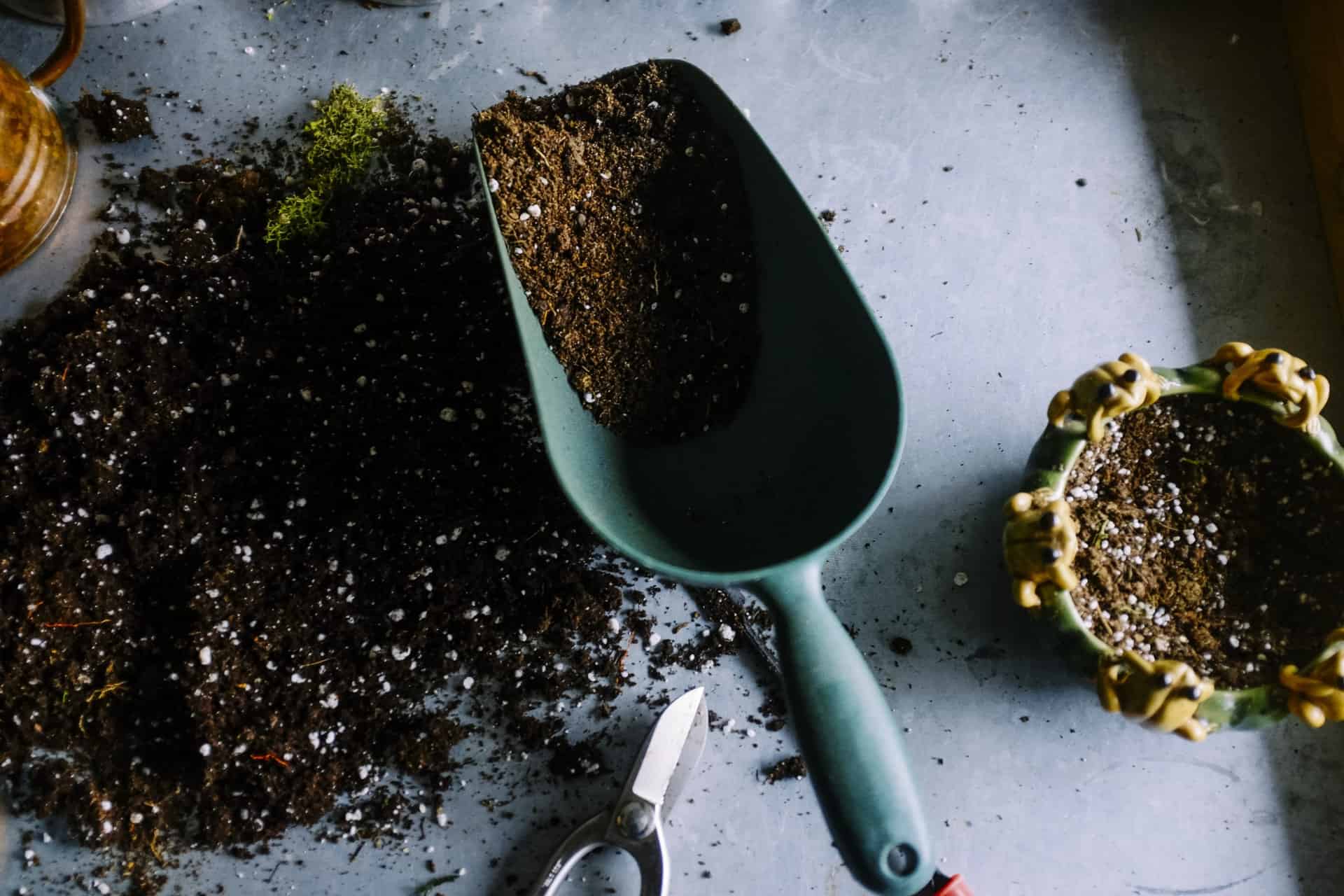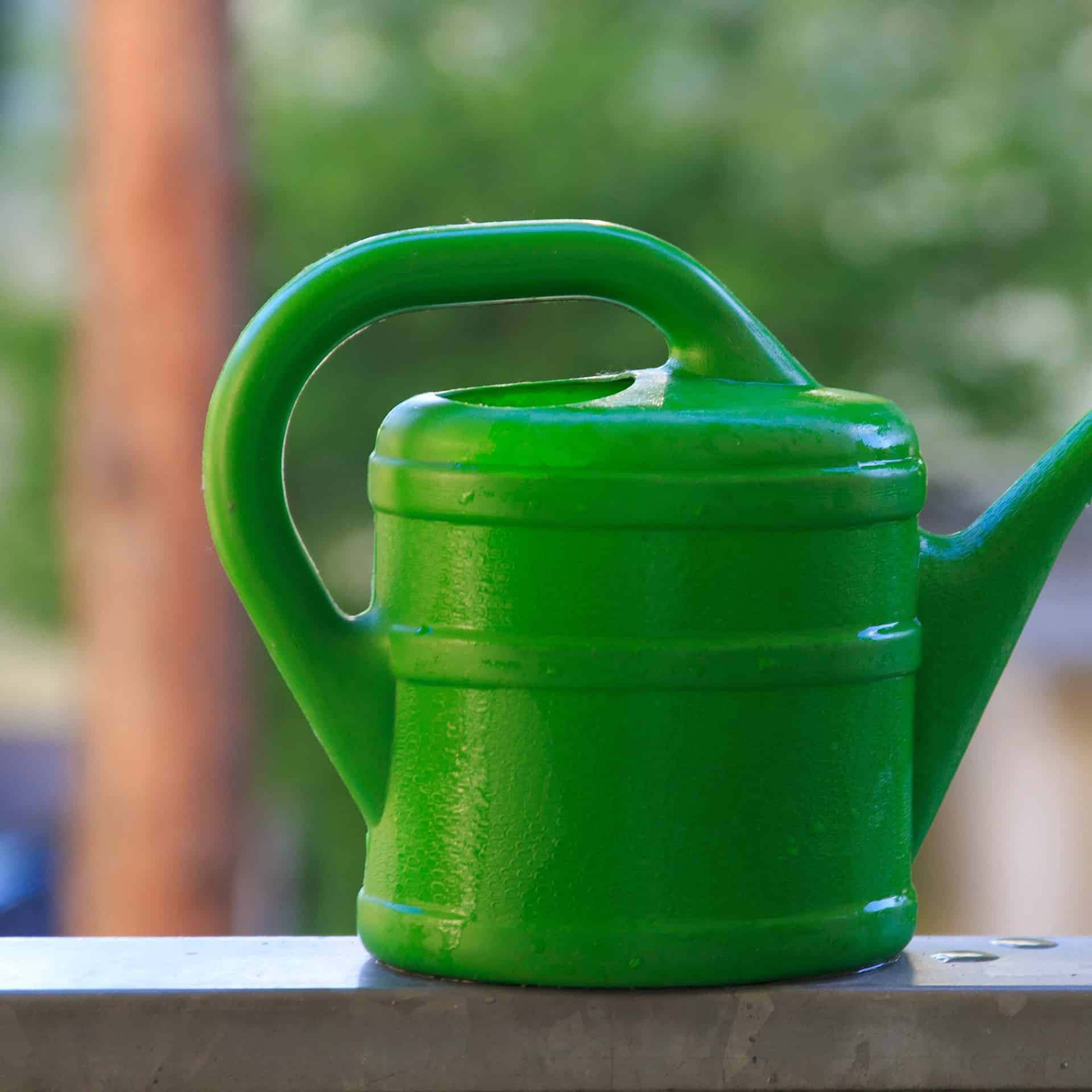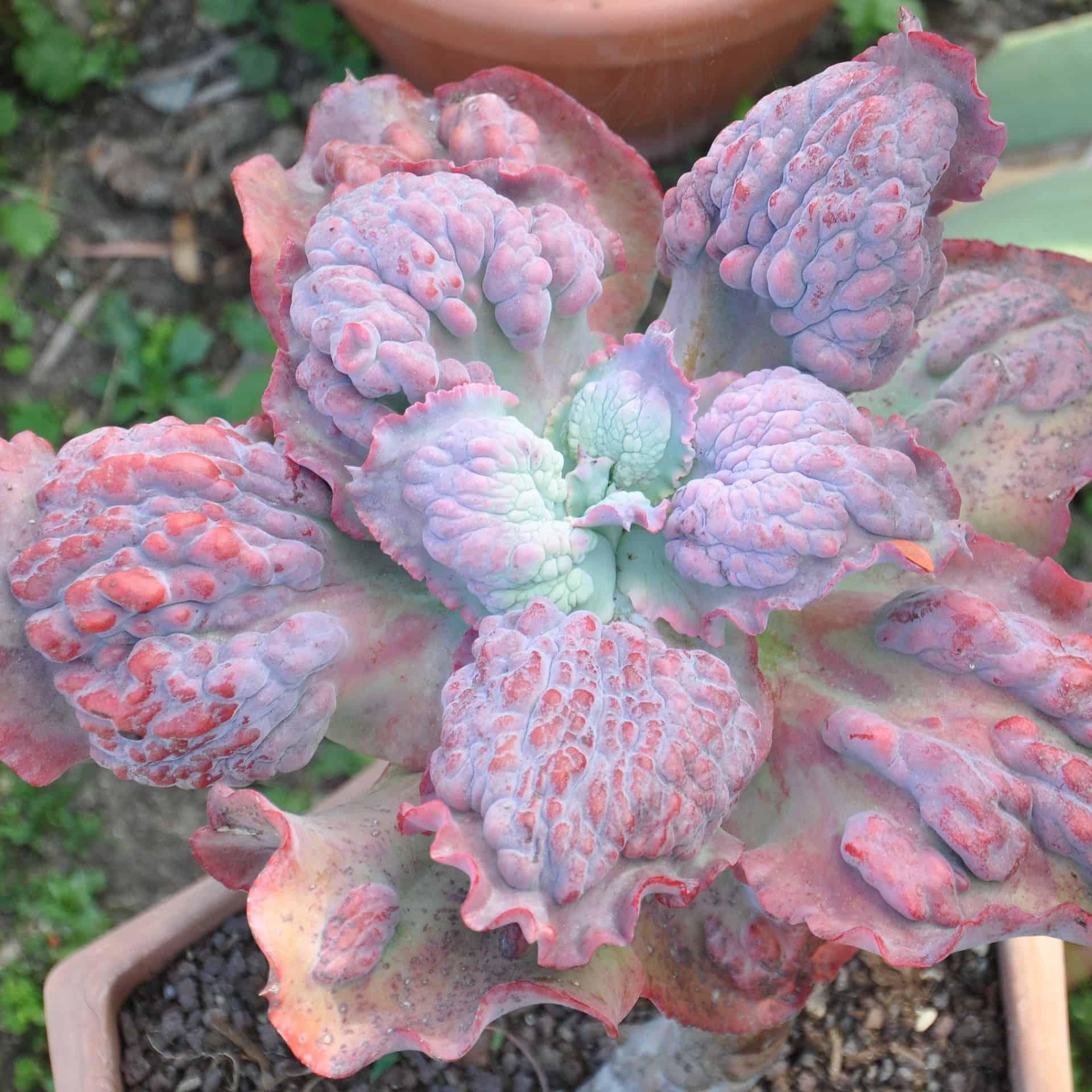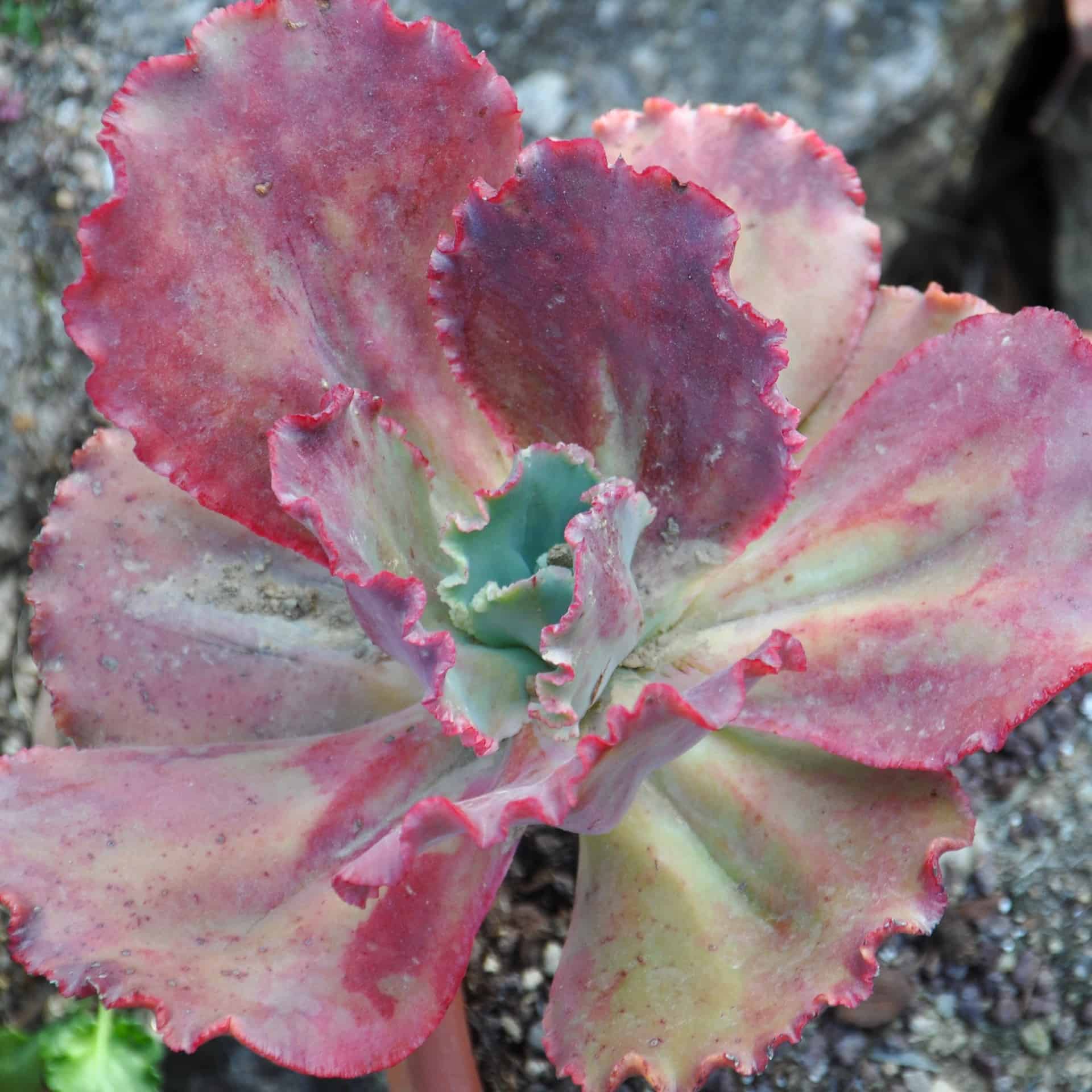No products in the cart.
Have you ever heard of the volcanic series of Echeveria hybrids created by Dick Wright? Not, then we introduce one of three of these gorgeous succulents.
The Echeveria Barbillion looks similar to the Echeveria Etna, with the last one in the series, the Echeveria Mauna Loa.
The main difference is that the Barbillion grows larger than the Etna. Today we will look in detail at this exquisite plant as the care for all of them are similar.
Echeveria Barbillion Care

As mentioned, the Echeveria hybrid is part of the Volcanic Encheveria collection. The popular Dick Wright creations are the Echeveria Barbillion, Echeveria Etna, and Echeveria Mauna Loa.
The Barbillion is part of the Sedinae genus belonging to the Crassulaceae and Sedoideae subfamily. As the plant matures, it can reach up to 18 inches in diameter. One of the main features of this succulent plant is the green-blue leaves with their white bumps.
Hence, it gives incredible colors in the living space to outdoors compared to most succulents. In addition, the Barbillion are caruncular hybrids growing on a hefty stem compared to the Etna, a short-stemmed plant.
The succulent can grow with slightly arching leaves; the true beauty is that the color changes to shape throughout the year. A fact is that there are many carunculated Echeverias, with this one being the largest and more vigorous than others.
Soil Mix Suitable for Echeveria Barbillion

Your Echeveria Barbillion needs well-draining soil similar to cacti and other succulents. With soil that drains freely, it keeps moisture away from the roots. A regular cactus or succulent soil is ideal for these plants.
When grown in containers, we recommend having enough drainage holes to allow the excess water to run from the soil to remove afterward. When your indoor plant stands in the water, it can cause root rot.
Sunlight Needs for Full Sun
Your Barbillion, like the other succulents, needs a lot of natural light to thrive. Hence, they need six hours of full sun with partial shade throughout the day. Growing indoors helps to place your plants outdoors in the warm season to help them flourish.
When your succulent does not receive enough bright indirect light, it starts to grow elongated, and the likeliness it will flower is scarce. Therefore, when your succulent stands are on a windowsill, we recommend turning them to receive enough light exposure from all sides.
Still, too much full sun can also lead to leaf burn leaving unsightly marks.
Watering Requirement

Succulent plants do not need much water as they store water in their fleshy leaves. Thus, the best is to wait until the soil is dry before watering again. Hence, the soak-and-dry method is the best watering technique.
Luckily, your succulent shows you when it needs water or not as the foliage starts to wilt or it drops leaves. So, feel the soil to see if the top two inches are dry or still moist before watering. Neither should your Barbillion be kept in damp soil.
You might end up with rotted or dead roots resulting in death for your plants. Another helpful tip is to water directly around the base of the plant instead of the leaves. Water sitting on the rosette can lead to fungal diseases.
Temperature & Humidity Needs
The Sedoideae tribe thrives in dry conditions; for the most part, they are not cold-tolerant. So, it is best to keep them away from drafts or too much humidity.
The Barbillion grows well indoors with average humidity levels of 40% to 50%. The best temperature is between 65 and 80 degrees Fahrenheit.
But when grown outdoors and temperatures drop, we recommend bringing them inside.
Fertilizing of Echeveria Barbillion

Generally speaking, your Barbillion does not need feeding. Yet, to encourage healthy growth, we recommend using a cactus fertilizer very low in nitrogen diluted. The best time to feed your Echeveria is every two to three weeks in the growing season of spring and summer.
Repotting Echeveria Hybrid
When selecting a container for your Barbillion, choose one slightly larger than the root ball. Luckily, your Barbillion does not need frequent repotting. You only need to repot them when they become too big for the pot.
Also, ensure that the soil is dry when you remove them from the pot. The best time to do this is in spring.
Propagation Methods Using Leaf Cuttings
The Barbillion is easy to propagate through leaf cuttings, seeds, and offsets. The Barbillion produces offsets when mature; you can separate them from the mother. Alternatively, cuttings are another unique way to ensure you always have one of these beauties available.
When several rosettes form, you can gently remove them, but they must be at least two inches in diameter. The best time to do this is in May and plant them in fresh soil. With a leaf, we recommend leaving it for a day or two to callous before placing it in soil.
Keep the soil moist until you see roots forming, then continue to water as usual.
Echeveria Varieties
We mentioned earlier that the Barbillion is part of the Volcano Encheveria variety. Now, we introduce you to the other two favorites of the group.
Echeveria Etna

Etna is another beauty belonging to the Crassulaceae family. It is a hybrid between the Mauna Loa and Barbillion. It has a distinct appearance forming rosettes with a violet frosty blue leaf with warts. When in bloom, it displays bell-shaped flowers in red or orange.
Echeveria Mauna Loa

It is a large clustering Echeveria with cabbage-like rosettes with stout stems growing tall. The leaves look pale green, but younger leaves grow with a pink-tinted green-gray color narrowed at the base with a frilly apex.
Echeveria Barbillion Plant Diseases and Pests
Regarding pests, the main concerns are mealybugs, and if you notice dead leaves, we recommend removing them. A great way to treat an infestation is using cotton wool dipped in isopropyl alcohol or a neem oil spry.
Furthermore, keep an eye on watering, as overwatering can lead to root rot.
Frequently Asked Questions
The lifespan ranges from three years to decades when caring for them well. It all depends on the care, environment, and variety.
The Echeveria Barbillion needs up to six hours of sunlight daily to thrive. When not receiving enough light, it becomes leggy, reaching out to receive natural light.
The Barbillion sprouts offshoots, and you can remove the babies to replant them in a container.
Luckily the Barbillion is not a rare species and is found at local garden centers. But you need not look far as Plantly has the Volcanic selection for you.
Whether you want to buy, sell, or simply reach out to other plant enthusiasts, Plantly is the right place to be!


